 Moon & Mercury --- | ---
Outer Planets
Moon & Mercury --- | ---
Outer Planets

 Moon & Mercury --- | ---
Outer Planets
Moon & Mercury --- | ---
Outer Planets

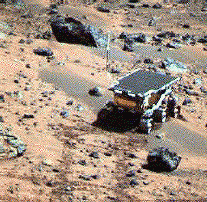
Reading:
Chapter 5 (ZG4)
 |
Key Question: | What is the surface of Venus like, and how do we find out? |
|---|---|---|
 |
Key Principle: | Geologic activity |
 |
Key Problem: | What is the smallest scale feature we could see on Mars from the Earth? |
 |
Key Quote: | "Venus and Mars are alright tonight ..." - Wings over America |
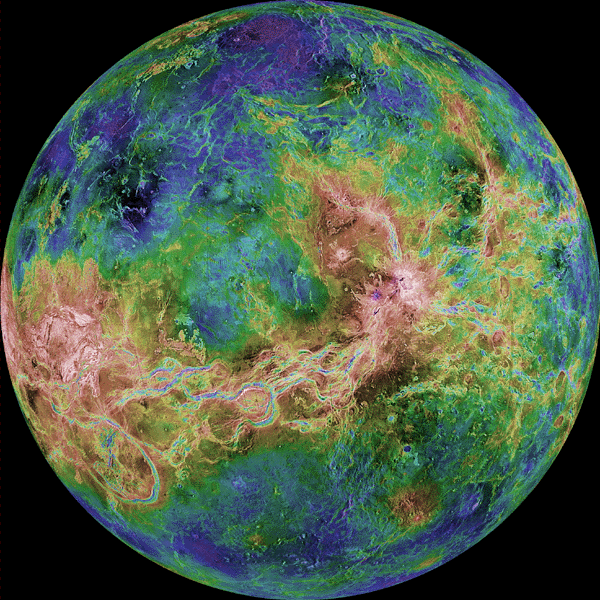
From Earth, it is clear that Venus is a cloud-shrouded world, and it was once thought that lush jungles could be hidden beneath the clouds!. However, the Soviet Venera landers showed us a scorched desert buried under more than 90 atmospheres of pressure with temperatures above 475 C!
For more information on Venus:
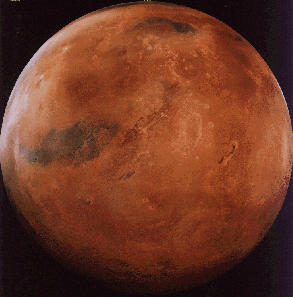
The first Mariner images of Mars dispelled the notion of a world with canals and gardens. The cratered surface of Mars was photographed by Mariner 6's wide angle TV camera on July 30, 1969 at a range of 3,459 kilometers (2,150 miles). The area measures 901 kilometers (560 miles) by 692 kilometers (430 miles) and is located southeast of Meridiani Sinus about 15 degrees below the equator. The large crater at right is about 257 kilometers (160 miles) in diameter.
The Viking lander took images of Mars in 1976. These show the reddish hue of the Martian sky. The red cast is probably due to light scattered and reflected from sediment suspended in the lower atmsophere.
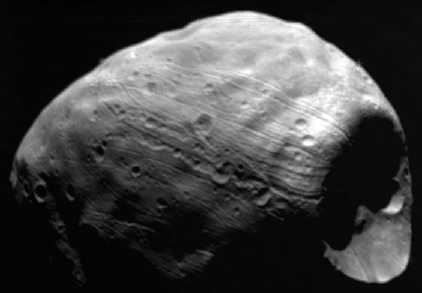
For more information on Mars and its moons:
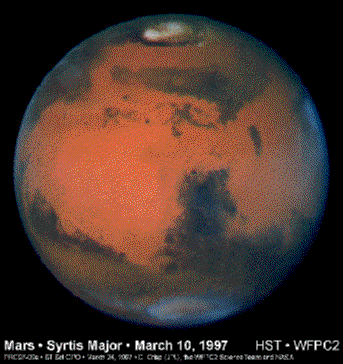
Mars, courtesy STSCI
The Hubble Space telescope has taken a series of spectacular images of Mars. See the NASA press release for more details. Also see the CNN story on the Mars HST images (CNN 5/21/97).
 Prev Lecture ---
Prev Lecture ---
 Next Lecture ---
Next Lecture ---
 Astr11 Index ---
Astr11 Index ---
 Astr11 Home
Astr11 Home
smyers@nrao.edu Steven T. Myers